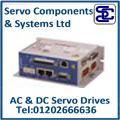
Posted to News on 19th Nov 2012, 14:14
Machine user manuals, noise levels and the Machinery Directive
Doug Florence, a Senior Consultant at SafeMech, discusses the issue of noise emissions from machinery and introduces research that found the vast majority of manuals falling short of the Machinery Directive's requirements.
The EU recently ran a project called NOMAD to look at the reporting of noise emission in user instructions for about 1500 machines in 40 families from 800 manufacturers. They found that an amazing 80 per cent of the manuals were not in conformity with the requirements of the Machinery Directive, either because the noise information required in EHSR 1.7.4.2 u was missing, not credible or unsuitably reported.
The Machinery Directive 2006/42/EC requires measurement and declaration of corrected sound pressure at workstations and, if this exceeds 80db(A), sound power as well; also a value for peak sound pressure is required where that exceeds 130dB(C) at workstations.
As simple definitions, sound pressure is 'how loud the sound appears to the ear', while sound power is the total amount of sound energy that the equipment radiates into the environment. The difference is a key concept to grasp; dB(A) measurements are weighted to simulate the hearing response of the human ear, while dB(C) are unweighted.
The measurement techniques used for sound power aim to minimise the effect of the test environment by applying corrections for measurement environment and background noise, and they aim to specify an expected uncertainty for the measurement. There are EN ISO standards covering how standardised noise measurements should be made and the results declared. Most C Type machinery standards specify conditions in which equipment should be operated for noise measurements, so the measured noise figures should be repeatable for any one model of machine.
For a given machine in the same operating condition, the sound power emission from the machine will always be the same. However, the sound pressure, and therefore how loud it actually sounds, will depend on where it is installed; for example, the same machine will be much quieter out of doors or in a large absorbent room than in a small concrete-walled room.
Machines in the real world
Corrected sound pressure at the operator position measured in accordance with ISO standards is nearly always lower than actual sound pressure at the operator position, and once a machine is installed, adjacent machines and the overall factory environment will also affect the actual noise levels to which an operator is exposed. The noise levels which the MD requires to be quoted are therefore only very broadly indicative of whether hearing protection will be required. The only way to determine that is to makes in situ measurements for each installation, as required by Noise at Work Regulations.
If you have several machines radiating noise into a room, the total sound power emitted will cause a certain level of sound pressure at any point in the room. It is virtually impossible to theoretically relate sound power to sound pressure in a real-world environment, although obviously the more sound power is radiated into a room, the higher the sound pressure becomes.
Sound power is really only useful to compare similar equipment tested in similar ways; for example, if you have three machines that have all had their sound power measured in the same way, the one with the highest sound power emission will be 'noisiest' in the same position in the same room.
Many machinery noise measurement standards, especially those for machine tools, specify that the noise is measured with the machine idling or running unloaded at maximum speed. Again, this means that the measured figure is completely unrepresentative of the noise when the machine is actually working. The main reason for requiring noise measurement figures in the Machinery Directive is to provide a competitive pressure to drive noise levels down. They are fairly useless in determining whether a machine actually produces a hazardous level of noise emission.
Noise Emission of Outdoor Equipment (NEOED) sets limits for sound power emitted by some classes of equipment. This is useful in that it prevents excessively noisy equipment being placed on the market. The Machinery Directive itself does not impose limits on noise emissions. In the UK, Noise at Work Regulations require workplace noise measurements to be made and protective measures to be taken if the levels exceed action limits.
Measuring machinery sound pressure and sound power, as required by the EN ISO standards that support the requirements of the Machinery Directive, requires more than just reading the figures off a calibrated noise meter. Corrections must be made and, if the sound power level is required, there are further calculations to be made. The standards also specify how the results must be reported.
Although the Machinery Directive requires that all machinery user manuals include information about noise emissions, for one-off machines and large machines that will be installed in a noisy environment, the only useful noise measurement is the in situ measurement when the machine is in use. For serially manufactured machinery, the only useful function of the corrected sound pressure measurement at operator position is to determine whether a sound power measurement needs to be taken.
It appears that the EU will be taking measures to raise awareness about poor reporting of noise measurement figures. Machinery manufacturers should check that they are sure that the noise measurements they quote in their user instructions have been competently made. Machinery users should be aware that although the quoted figures may help them to decide which is quietest machine to buy (if the figures are credible), the quoted noise figures do not give much indication of how noisy their workplace will be once the new machine is installed.
For further information about noise emission and machinery safety, go to www.safemech.net.
Want the latest machine building news straight to your inbox? Become a MachineBuilding member for free today >>


















